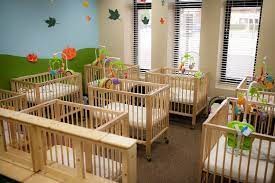Daycare facilities face a considerable risk of getting bed bugs because they enjoy significant human traffic. These bugs can find their way into your daycare in diaper bags, stuffed animals, blankets, and clothing. This post offers essential tips to help you avoid getting bed bugs in your daycare.
Table of Contents
Can you get bed bugs in your daycare?
You can get bed bugs in your daycare no matter how clean your daycare is. Bed bug infestation is not directly related to cleanliness since the bugs hitchhike in children’s belongings. Children from infested homes are likely to bring bed bugs to your daycare unknowingly.
Once they arrive at your daycare, the bed bug will hitchhike from their belongings and onto your daycare facilities. According to bed bug statistics, daycare centers and schools have a 47% chance of having bed bugs. Besides nursing homes at 59%, daycare centers and schools have the highest percentage of bed bugs in America.
If you find bed bugs in your care, you must treat them immediately to prevent further harm and spread. Mature female bed bugs can lay between 1 to 5 eggs per day and about 500 eggs annually. If you find a one-bed bug, it indicates more hiding in your daycare. Bed bugs multiply so fast due to their egg-laying abilities and the ability to stay long without eating. Their lifespan is also supported by their ability to withstand various adverse temperatures.
Common hiding spots for bed bugs in a daycare
Bed bugs are tiny critters about the size of an apple seed, meaning they can hide anywhere, including minute spaces. Nonetheless, it would be best to remember that these bugs often hide in places that guarantee proximity to blood. Here are some common hiding spots for bed bugs in daycare and why they are like them.
Luggage areas
If your daycare has room to store children’s belongings, luggage, and accessories, that’s the first hiding spot. Bed bugs will crawl from infested belongings and shift into other kids’ belongings or your daycare amenities.
Clothing
Bed bugs are attracted to human blood and scent. Bed bugs are likely to hitchhike in dirty Clothing since it has human sweat and odor. Cloths are also warm, thus making a suitable hiding spot.
Buckets of toys
Buckets of toys offer a suitable hitchhiking spot for bed bugs since children are attracted to toys. Bed bugs hide and wait for a perfect opportunity to crawl into feed.
Bed and furniture
Bedding and furniture are the best hiding spots for bed bugs. Bed and beddings offer warmth, carbon (IV) oxide, and ready food for bed bugs. Bed bugs crawl out of their hiding spot to suck blood from sleeping children.
Wall cracks and crevices
Bed bugs are good at hitchhiking in places and can hide in the cracks and crevices on the wall. Due to limited human interference, the gaps offer a serene place to hide and lay eggs. It is wise to seal all cracks and crevices in your daycare to eliminate potential hiding spots for bed bugs.
Identifying bed bugs in a daycare
The most straightforward way to identify a bed bug problem in your daycare is to see actual living bugs. However, you will rarely see living bed bugs because they are tiny and good at hiding. It is advisable to check for the following signs of bed bugs at regular intervals:
Bed bug bites
Bed bug bites on the children’s skin can mean you have bed bugs in your daycare. It is, however, essential to note that bed bug bites on the skin often resemble bites from other common pests such as mosquitoes. You can identify bed bug bites from their distinct pattern on a child’s skin.
Bed bug exoskeletons, eggs, and shells
Even though bed bugs are visible to the naked human eye, it is pretty hard to spot them due to their hiding prowess. You will likely come across blood spots, exoskeletons, and eggs on beddings, beds, and furniture. However, they leave some remains, such as exoskeletons, eggs, and blood wastes. A UV flashlight can help you to identify bed bug exoskeletons in your daycare because they emit a blue light when subjected to ultraviolet rays.
Bed bug odor
Bed bugs have a characteristic musty odor. Bed bug odors can be sweet if the infestation is still small. However, the scent is unpleasant if the infestation is high.
Inspecting for bed bugs in a daycare
Bed bugs are routinely found in areas people sleep or stay. They like being close to humans since they suck their blood for food. If you inspect your daycare for bed bugs, check areas where children sleep and keep their belongings. Therefore, you should check the kid’s bed, bedding, Clothing, backpacks, and other belongings. You must also examine mattresses, box springs, bed frames, headboards, tables, wall cracks or crevices, and wallpapers.
Bed bugs are exceptionally good at hitchhiking; finding some might take a while. You have to be creative enough and inspect all items at the daycare that bed bugs can cause possible hide. This includes electronics, diaper bags, boxes, furniture, second-hand items, and other clutters.
What you should do if you find bed bugs
There is no need to panic if you find a suspect bug or signs of bed bugs in your daycare. Panicking leads to several mistakes when trying to get rid of bed bugs. Instead, carry out the actions outlined below with a calm mind:
Identify
Identification of suspected bed bugs is essential. You must collect the bug using tissue paper and place it in a plastic bag. You must investigate the collected species and confirm if it’s a bed bug. If in doubt, you can contact professional exterminators to clarify the same.
Inspect
Once you’ve confirmed it’s a bed bug, inspect where you found it. There could be more bed bugs hitchhiking in the exact location. Search for additional bed bug signs and examine their origins. It could have been brought through Clothing, second-hand items, or children’s belongings.
Suppose you find it on a bed, inspect all the bedding for more bed bugs. You may discover eggshells, exoskeletons, and blood stains.
Isolate
If possible, isolate the affected items to limit the further spread of the bed bug. You should place all isolated items in a plastic bag and store them in a separate room. If bed bugs are found in a child’s clothes, treat them as an infested cloth that needs to be changed. Help the kid transform into new fittings and place the affected cloth in a plastic bag.
Inform
Inform all daycare staff about the bed bug and provide training to handle the infestation. You must also notify the parents and guardians because the children’s parents are the primary stakeholders and should know about bed bug issues at your daycare.
Treating bed bugs in a daycare
You must treat your daycare facility to eliminate bed bugs once you inform all parties of the problem. Here are some effective treatment options that you can use:
- Perform intensive cleaning and remove all the cluttered items. Make sure to clean thoroughly
- Vacuum clean floors, furniture, electronics, and other clutter that the bed bugs might hitch on.
- Plush toys and soft items
- ·Place all affected linens, pillows, shoes, coats, plush toys, wool, and clothes in a drier for at least 30 minutes.
- If a student’s diaper has bed bugs, place it in a plastic bag.
Preventing bed bugs in a daycare
Preventing bed bugs in daycare is challenging because it enjoys lots of human traffic. Nonetheless, the following measures can help reduce the risk of getting bed bugs in a daycare:
- Educate all staff and members of the daycare
- Inspect all items children bring to daycare, such as lunchboxes, backpacks, and other personal belongings.
- Ensure all facilities at the daycare are clean and uncluttered.
- Maintain a strict bed bug policy at the daycare
- Ensure that all beddings are regularly heated in a drier for 30 minutes
Final thoughts
Every child represents income in your daycare business. Bed bug infestation can ruin your business reputation and reduce income significantly. Bed bugs are health risks to children since they can cause skin irritations and other allergic reactions. Even worse, bed bugs stress children, robbing them of valuable and quality time at your place.
What’s next? Maintain a strict bed bug policy to protect your daycare. Adhere to the tips this post shares to help avoid getting bed bugs.
FAQs
Can parents sue you if you have bed bugs in your daycare?
Yes. Parents can sue for damages caused by bed bugs. You are responsible for providing a safe and conducive environment for children under your care.
Do bed bugs infest a daycare because of poor hygiene?
Bed bugs infest both clean and poorly maintained daycares.
What should you do if you suspect a specific child of introducing bed bugs in a daycare?
There is a list of actions you should take if you suspect a particular child has bed bugs. It would be best to start by separating the child’s belongings from others, changing the child’s clothes, and informing parents or guardians.

